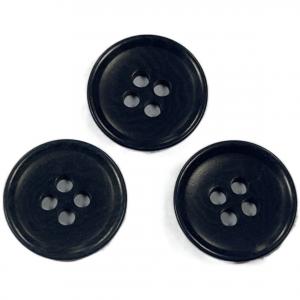Buttons accompany people from the earliest of times. The oldest buttons are found in India and date back to the Early Bronze Age. The interest in this small accessory rises in years of bloom and wealth and declines in times of misery and wars. These tendencies alternate to this day.
The “Green wave” or the quest for eco-friendliness and the buttons:
In recent decades the strive for consumption mainly of renewable natural resources, which do not require complex industrial processing, conquered the world and had an affect even on the button market. There is an increasing preference to the natural materials, such as horn, wood, nacre, ivory, cork, corozo, etc.
Probably, of all mentioned materials corozo is the least known or completely unknown to you.
In fact, even if you don’t know what corozo is, you most certainly have used corozo buttons. They are very widely available, because the material they are made of is cheap, of high quality, natural, and can easily be processed and coloured.
What is corozo and where it comes from:
This is a kind tropical palm of the genus Phytelephas, which is also called “tagua” or “corozo”. It thrives in the rainforest of South America. Its large fruits hide several seeds that are harder than wood and are encased in a bonelike shell. Due to its appearance and the yellowing, resulting from the sunshine, it looks like ivory and this is the reason to be called “vegetable ivory”. Local craftsmen make avail of this similarity and produce wonderful miniature sculptors that are very popular among tourists.
The first imports from Ecuador in Europe of “tagua” nuts date back to the end of 18th century. They were traded extensively and in 1920 more than 20% of the buttons in the United States have been corozo buttons – made from the this material.
It was almost forgotten when plastics flooded the markets after the end of World War II. However, together with the new environmental thinking and the demand for natural materials, the massive production of buttons of vegetable ivory quickly recovers.
The corozo material is practically inexhaustible. Even the trees do not have to be cut for its harvesting. Simply the fruits, fallen to the ground have to be collected. Their pericarp is used for animal feed, and the seeds are sent to the button factories and the artists’ studios. Only when the ripe fruits detach from the tree, they are sufficiently mature and suitable for processing.


